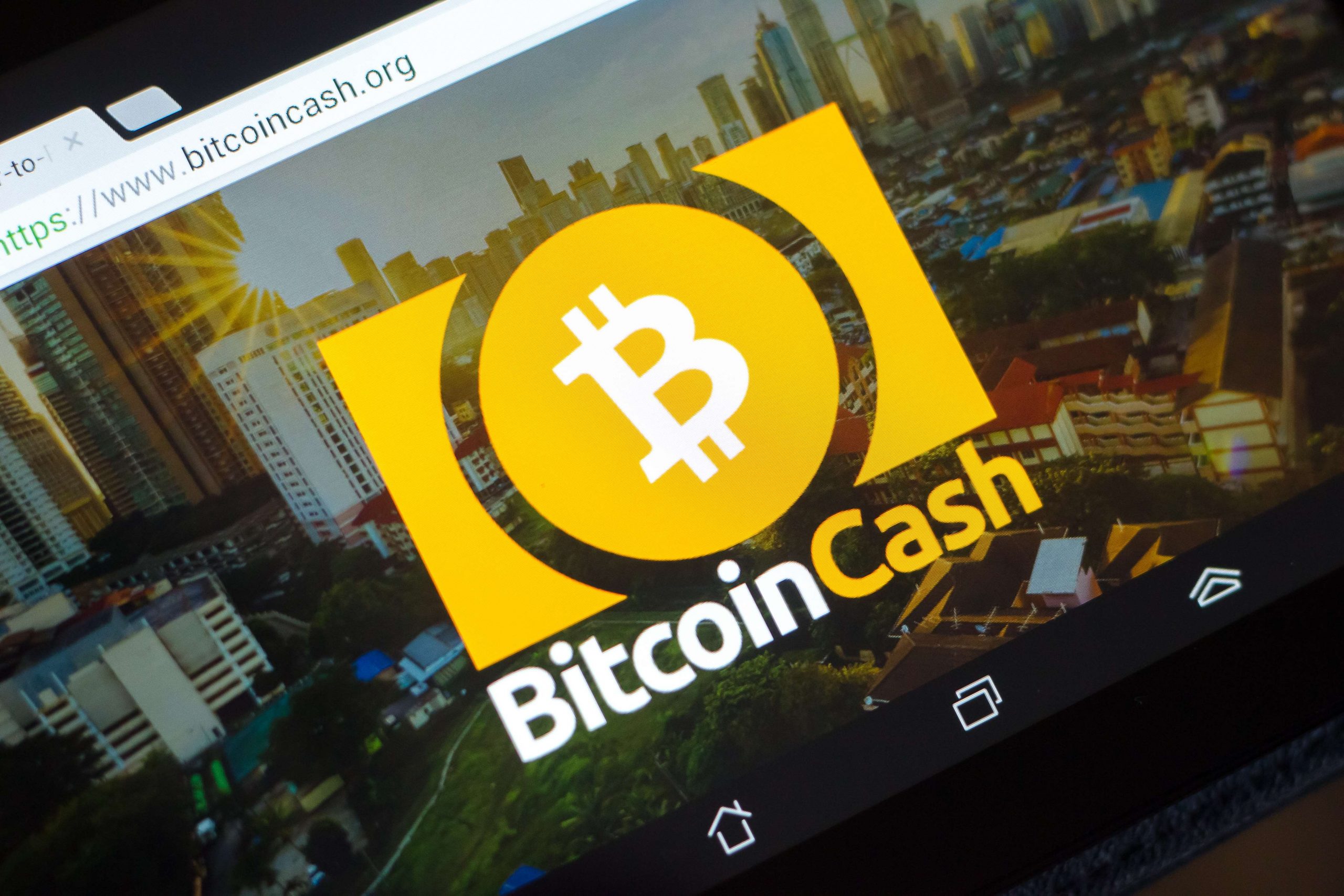Content

The London hard fork upgrade to ethereum’s blockchain included EIP-1599, a fee-reduction feature that has been burning $8,900 worth of ether every minute since it went into effect. That ongoing reduction in the supply of ether is likely aiding to its recent price gains, with the cryptocurrency up 18% since the London fork went into effect. The Ethereum London Hard Fork upgrade is a set of five improvement proposals.
Ethereum’s ‘EIP 1559’ Fee Market Overhaul Greenlit for July – Coindesk
Ethereum’s ‘EIP 1559’ Fee Market Overhaul Greenlit for July.
Posted: Fri, 05 Mar 2021 08:00:00 GMT [source]
The London hard fork, if it works as intended, will make Ethereum’s transaction fees more predictable. The somewhat contested but eagerly anticipated Ethereum “London” hard fork has activated, and already the price of ether is up 3.9% in the last 24 hours, reports CNBC. The successful upgrade brings about several changes to the network, including changing how transaction fees are calculated and setting the foundations for making it harder for miners to earn money.
Other Big Changes In Ethereum
Lee has a price target of $15 for ether before the year is up, returning it to its pre-DAO hack heights. The community seems unanimous—according to Ethereum’s publicly available Github code, a hard fork is tentatively scheduled for July 20. While the core developers who designed and run Ethereum didn’t really have anything to do with the DAO, they were left to deal with the mess. Privacy is Orchid’s mission—the team is continuously working to ensure that users can explore the Internet freely. For the foreseeable future, probabilistic nanopayments will play an essential role in that mission.
There wasn’t a chain split, a price crash, or the end of the world’s computer as miners went along with forking Ethereum and integrated EIP-1559 as part of the London Hard Fork. But Institutional investors are now casting a wary eye on something called MEV. “Block size will be scaled depending on how congested the network is and transaction fees scale with it,” added Matthijs.
Berlin Eips
First, developers and clients should agree on a specific period that a testnet must meet to be declared successful and implemented on a mainnet. First, the client teams said that the “speed and lack of clear success metric” for the testnet to mainnet deployments have been an issue. Ethereum client teams feel the process is “quick”, “somewhat forced”, and with a lack of agility to react to problems.
- This will help avoid having your client sync to a pre-fork chain, resulting in the inability to send funds or properly verify transactions.
- Though it’s not getting the same attention as EIP-1559, another one of the EIPs included in the London fork is EIP-3554 and its significance cannot be understated.
- On Aug. 4 at block 12,965,000, the London Hard Fork will go live on the Ethereum main network when a series of five protocol updates called EIPs are deployed.
- EIP-1559 proposed a new transaction pricing mechanismthat creates a base fee for each block.
- Nearly $1 billion worth of Ether has been burned since the implementation of EIP-1559, fueling «The Triple Halving» narrative.
MEV, or Miner Extractable Value, refers to the ability for miners to re-prioritize the orders of transactions on the Ethereum blockchain. One of them is a mechanism that allows burning a large portion of transaction fees—called the “base fee”—instead of sending it to miners. However, this spike in gas fees could just be a function of increased network congestion that the price action of the asset and the upgrade itself attracted.
What Is Ethereums Idea Behind Burning The Base Fee?
But experts tell CNBC that the problem with this logic is that in the next few years, ethereum miners are approaching a cliff that will make them obsolete. In fact, included among Thursday’s upgrades is a stipulation that addresses this very mining Armageddon. Hougan argues that because miners are organically linked to the overall value of ethereum, the hope is that they ultimately make up for these losses as the price of ethereum goes up thanks to these protocol changes. Another change essentially sets the stage for a major transformation of ethereum that will make it harder for miners to earn money and could eventually make mining irrelevant. We strongly recommend that you consult a licensed investment advisor or other qualified financial professional if you are seeking investment advice on an ICO, IEO, or other investment. We do not accept compensation in any form for analyzing or reporting on any ICO, IEO, cryptocurrency, currency, tokenized sales, securities, or commodities. The base fee will get burned with every transaction, adding deflationary pressure on ETH.
How many Bitcoins are left?
There are currently close to 2.134 million Bitcoins left that aren’t in circulation yet. With only 21 million Bitcoins that will ever exist, this means that there are about 18.86 million Bitcoins currently available.
There has been widespread exasperation at the congestion we’ve seen on this network — exacerbated by the triple threat of a bull market, the explosion of NFTs and the thriving DeFi sector. The Ethereum 2.0 network will be structured in such a way that it moves from the “proof-of-work” mining system currently being used to a “proof-of-stake” system. This new system would require users to leverage the ether they already own as the way to verify transactions and make new coins. It would mean a monumental change, not just for Ethereum, but for all of cryptocurrency, as everything is currently structured akin to the proof-of-work system. The changes to the code of the second-largest global cryptocurrency helps to address a scaling issue that has plagued the network increasingly in recent months. Ethereum has often had extremely unpredictable and often times sky-high transaction fees. Long-term, however, the proposal’s co-authors hope to make ether deflationary by reducing the supply.
Access The World’s Most Popular Cryptocurrencies With Low Fees And Social Trading Features In One Simple App
In computing, a «fork» is a change in open-source software agreed upon through the consensus of the people that operate or maintain it. Soft forks are typically minor changes or patches that don’t drastically impact the network and its users. Hard forks are more significant changes that create a new version of the blockchain. When Ethereum developers floated the proposal, it focused on tackling spiraling gas fees and making it predictable.
- The Arrow Glacier network upgrade pushes back the difficulty bomb by several months.
- Similar changes have been performed on the Byzantium, Constantinople and London network upgrades.
- The tip can be seen as a priority fee so that applications and users can choose to pay if they want their transaction to be prioritized by the network.
- Now, a complete overhaul of Ethereum—a network-wide upgrade known as Ethereum 2.0, or Eth2.0—is reshaping the dynamics of the network altogether, with important implications for the entire ecosystem.
- Miners have seen a slow down in the increasing difficulty of mining to coincide with Serenity.
Adam Cochran, Partner at Cinneamhain Ventures, an activist venture capital firm, commented on the confusion between high priority and max gas fees. One example might be a smart contract that disbursed funds to activists in an oppressive regime. It can’t simply be shut down by a cease-and-desist order delivered to an office, or even by sending in troops to cart away servers. That’s because that particular pool of funds exists as an application on the Ethereum blockchain, which is dispersed around the world on whatever servers run its code. One of Ethereum’s core principles is that it offers a way for developers to write decentralized applications that external parties can’t alter. These applications will exist “without any possibility of downtime, censorship, fraud or third-party interference,” says Ethereum’s official documentation. “The Hard Fork is a delicate topic and the way we see it, no decision is the right one.
Get Free Cryptocurrency
This could result in the circulating supply of Ether beginning to dwindle over time, potentially giving ETH’s value a boost. Previously, users would participate in an open auction that was essentially blind for each block; users would place bids with miners and propose transaction fees in a closed bid where with no guidance on prices.
In a hard fork, miners must choose whether to continue validating the old blockchain or the new one. The London hard fork is exciting, but it also comes with risks and ventures into uncharted territory.
Analysts argue that the deflationary effect of EIP-1559 is driving applications to other networks. Click here, or sign up for our newsletter to explore more of Benzinga’s Cryptocurrency market coverage, in-depth coin analysis, data, and reporting. Estimates show that as much as 1.83 million Ethereum will be burned following the implementation of EIP. New technology is upending everything in finance, from saving to trading to making payments.
Skip the Bitcoin ETF and Invest in These 7 Cryptos Instead – Investorplace.com
Skip the Bitcoin ETF and Invest in These 7 Cryptos Instead.
Posted: Mon, 15 Nov 2021 08:00:00 GMT [source]
This caused transaction costs to skyrocket, particularly in times of high network traffic. While ETH holders see this deflationary mechanism as a positive development for the value of their assets, Ethereum’s mining community has resisted it over concerns that it will reduce their revenue.
Notice For The Postmedia Network
Stablecoins can help crypto investors avoid volatility in the markets, but they have plenty of other real-world use cases too. This will be followed by shard chains that will expand Ethereum’s capacity to process transactions and store data, too. With no single person in charge, whole communities end up being involved in implementing upgrades. Ethereum.org on waybackmachineThe Yellow Paper, authored by Dr. Gavin Wood, is a technical definition of the Ethereum protocol.
With the network upgrade in effect, users will no longer use the previous auction system for ether coins and instead will pay a base fee. That fee will be set automatically by the network depending on how busy it is, instead of from users submitting bids. They will also be able to pay a miner a «tip» to have their transaction processed sooner. Previously, gas prices were determined via bids, where those performing the transactions would pitch their bids to miners. It reached a point where average bid prices resulted in normal speeds being used to complete transactions, so many users found themselves paying higher and higher gas fees in order to speed their transactions up. The EIP-1559 update will enable users to speed up their transaction fees by “tipping” miners through the incentive part of the gas fee.
Another major change under EIP-1559 is that part of every transaction fee will be burned, or removed from circulation, which will begin to reduce the supply of ether and potentially boost its price. Rather than holding a blind auction every block to determine the gas price, ethereum’s protocol will algorithmically decide the transaction fee based upon overall demand on the network. The base fee on every transaction, which gets paid in ETH, will be burned and removed from circulation. Previously, miners received the transaction fee, but EIP-1559 lowers incentivization for miners to manipulate the network by reordering the blocks, in turn reducing MEV . First, the revenue generated from Ethereum mining will gradually decrease – the more Type 2 transactions hit the block, the more fees will be burned, consequently reducing the revenue from each block found.
Although this has already been delayed in the past, the transition is still not ready and thus another round. As previously stated, these temporary hard forks are all in preparation for what’s to come with ETH2. Nonetheless, they are exciting moments for the community to engage with a preliminary new way of functioning on the network. Lucas is a journalist with a background in covering blockchain and crypto.
Aydin Kilic, the new President and COO of HIVE, joins @TheDeepDive_ca to talk about the company’s 1 EH/s hash rate milestone amid worldwide chip shortages, the recent listing on Nasdaq and his take on $ETH London hard fork.https://t.co/eKCkQTEX3E
— H I V E (@HiveBlockchain) September 3, 2021
In addition, they proposed to pre-defined the path to be taken if a problem or bug is encountered. Once a fixed has been implemented, the testnet would need to run for more weeks to declared it successful.
Ethereum’s «London» hard fork has just activated, and it’s a major change. As speculation mounts around the EIP-1559 update, market participants seem to have rushed to add more ETH to their portfolios. hard fork Justin Drake talks ahead of Ethereum’s EIP-1559 update, shipping as part of the London hardfork. Get daily crypto briefings and weekly Bitcoin market reports delivered right to your inbox.

When people send or receive smart contracts, computers are required to validate those transactions. Ether comes into existence by a successful validation, the process is called mining. Simply, Ether is the native currency and Ethereum is the technology that produces it. People can mine Ether or buy those that are already mined from an online exchange. Bitcoin price in India was around Rs. 35.3 lakhs and Ethereum price in India was around Rs. 2.47 lakhs as of 6pm IST on August 13.
It is not offered or intended to be used as legal, tax, investment, financial, or other advice. In sum, the main goal of London is to improve the quality of life for Ethereum users. For instance, though London isn’t going to make Ethereum cheaper to use,it does aim to make the cost of using Ethereum more predictable. The controversial proposal dubbed EIP-1559 was designed to achieve this. London is the overarching title for Thursday’s hard fork, which includes a total of five EIPs.
Before, the gas fees were given directly to miners who could then take the ETH and put it back into circulation; the introduction of EIP-1559 means gas fees are no longer given to miners. Instead, whenever a transaction takes place on the blockchain, ETH’s protocol uses an algorithm to set the gas fee. This standardised the cost for a transaction and makes nearly everything on the blockchain more predictable and easier to manage. Gas is a fee required to successfully conduct a transaction on Ethereum network and it is expensive when the network is congested. But the underlying cause of high Ethereum gas fees points to a scalability problem. High fees are caused by limited network capacity to process transactions.

Whether the economic shift resulting from London leads to broader changes in the topography of the global cryptocurrency mining ecosystem is tough to predict. As far as the network’s economy is concerned, Compass Mining’s Will Foxley estimates that due to the fee market changes in EIP-1559 miner income could fall by as much as 30%. There’s been a fair bit of ink spilled about how London is price-positive or “bullish” because it introduces deflationary characteristics to the network. CoinDesk’s Omkar Godbole spoke to some analysts for a piece Wednesday and the collective opinion appears to be “meh” on any immediate market response to London’s activation.
Author: Tor Constantino